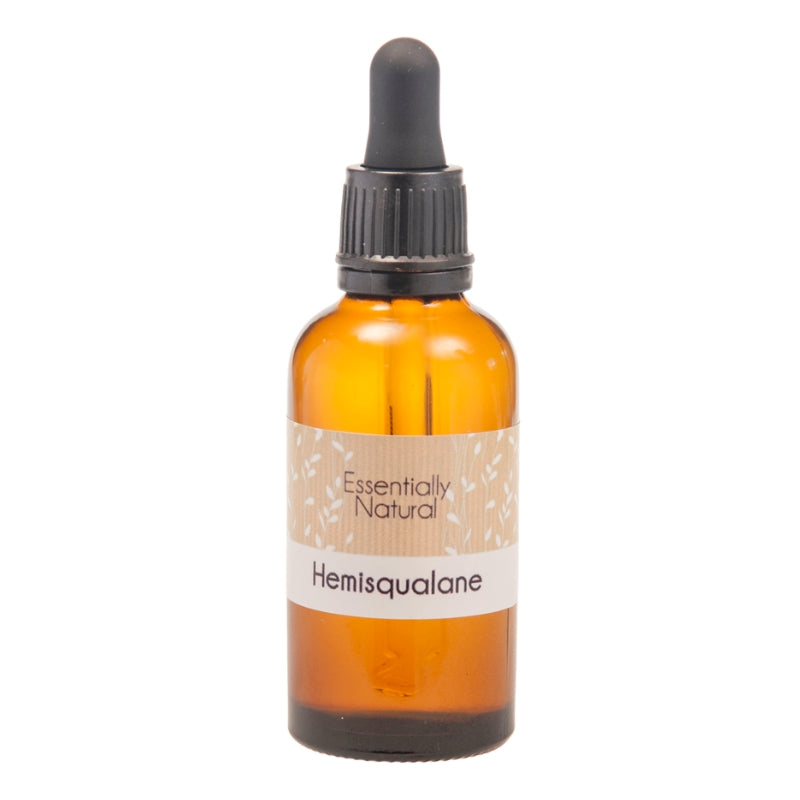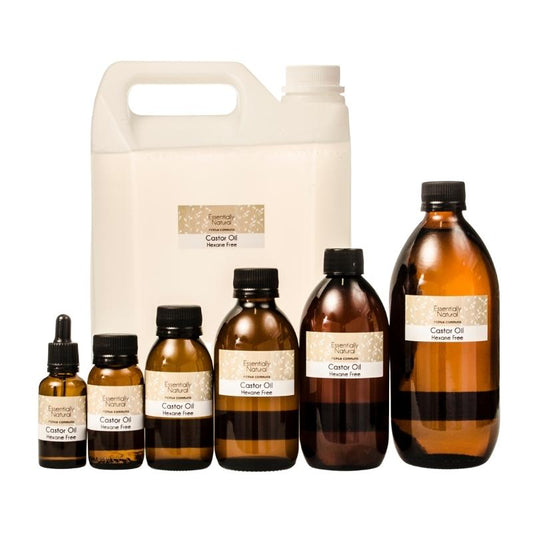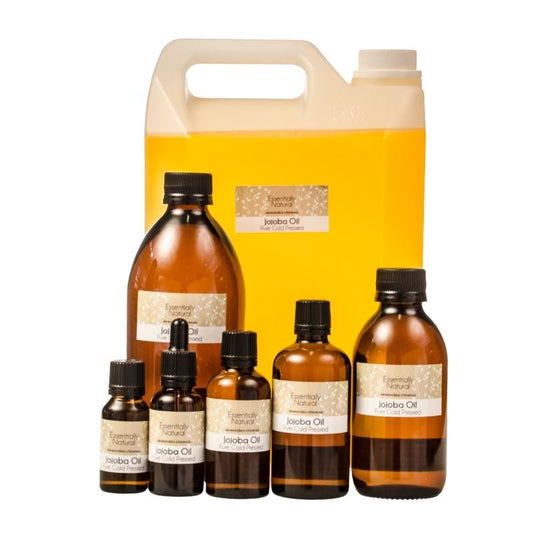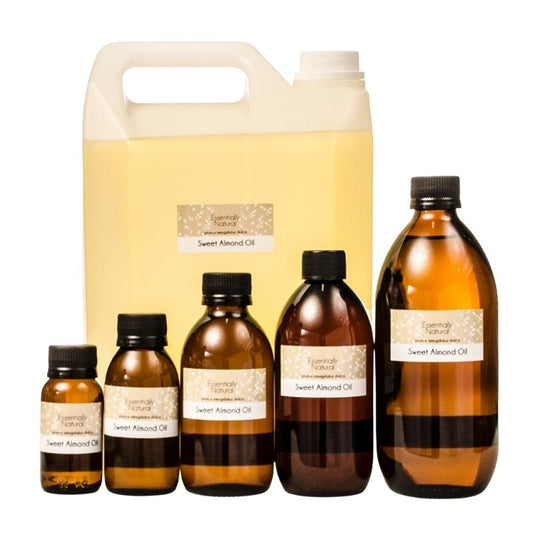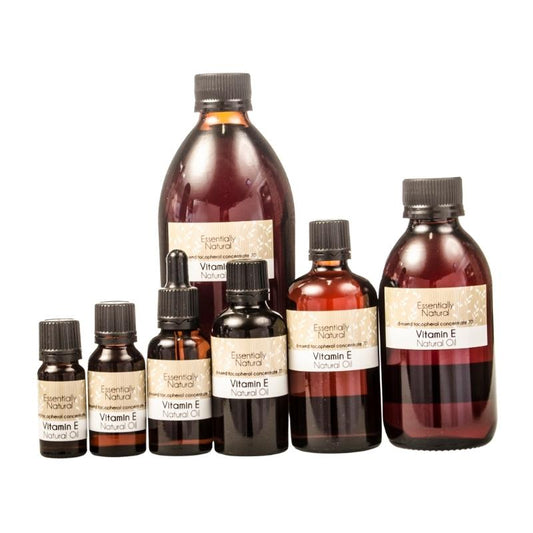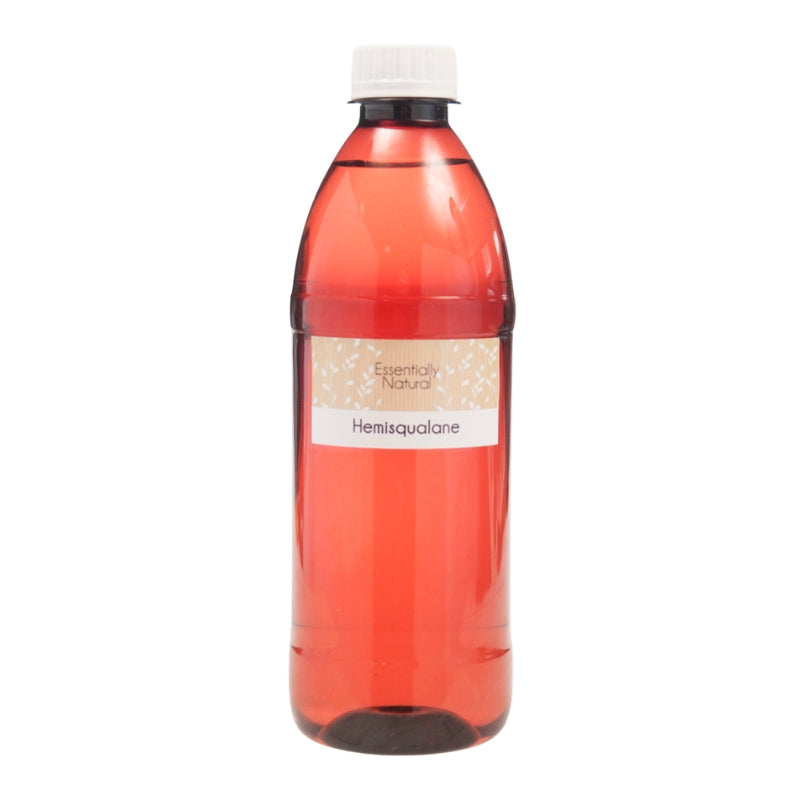
Formulating With Hemisqualane
Juliette van der MeerLast week we delved into why squalane is such a cool ingredient, and this week we are exploring hemisqualane.
What is Hemisqualene?
Like squalane, hemisqualane is also a hydrocarbon. It is not related to our skin's lipid profile so it doesn't have quite the same affinity for our skins as squalane does, nevertheless it is a cool ingredient. Hemisqualane is super lightweight and non greasy, and is therefore a great natural alternative to silicones. It is heat tolerant and non comedogenic, making it very useful in a range of formulations.
Hemisqualane has a low molecular weight, allowing it to:
- Penetrate hair strands.
- Absorb easily into the skin.
Hemisqualane is used in hair conditioners to provide the same glide and lightness that silicones would. It also reduces frizz in hair care products, and gives a lovely shine to the hair. In skincare, it increases suppleness and moisture while preventing transepidermal water loss.
- Chemical name: C13-15 Alkane
Hemisqualane is completely clear and has a very thin, almost water-like consistency.
Solubility
Hemisqualane is soluble in non polar oils, other silicones, and esters.
How does polarity work?
Hemisqulane is a non polar hydrocarbon so keep this in mind when mixing with polar ingredients as they may be incompatible.
What does non-polar mean?
Non polar simply means that there are no collections of positive or negative charges in the molecule, charges are evenly distributed across. Polar, on the other hand, means there are collections of positive and negative charges (called poles) on the molecule, and these can attach to other polar molecules. When polar and non polar molecules are mixed together, the polar molecules will only attract to themselves, leaving the non polar molecules sitting by themselves. This creates two distinct areas (separation).
Polarity, water and oil?
Water is a polar molecule, while many (not all) oils are non polar - hence water and oils don't naturally mix together, they separate into layers. You use an emulsifier to get past this issue in emulsions (creams and lotions), but you may want the separation in a bi- or tri- phase cleanser, so just be mindful of the product you are trying to make when using substances of different polarity and charge.
Apart from hemisqualane, other non polar oils include squalane, coconut oil, petroleum jelly and mineral oil, and silicones. Non polar oils are best for conditioning and moisturising.
I mentioned that not all oils are non polar, there are actually some polar ones. Polar oils can include fatty alcohols, esters and triglycerides. Some other polar oils include avocado oil, flaxseed oil, castor oil and grapeseed oil. Polar oils have good skin feel, moisturisation and spreadability (ie. they're greasy and can spread around on the skin).
Can Polar and Non-Polar Oils mix?
Depending on the degree of polarity (yes you can have stronger and weaker poles), strongly polar oils may not mix with hemisqualane as it is non polar; the hemisqualane will float on top of them. An example of this is castor oil and hemisqualane. You would make use of an emulsifier to mix polar and non polar oils together if they weren't cooperating.
Can Polar Oils and water mix?
Remember that just because a certain oil might be polar and water is also polar, the two still won't mix together without an emulsifier. Water and oil do not mix naturally even if some of their other properties may align.
Including polar and non polar substances in an emulsion can change properties such as skin feel, texture and viscosity. It's worthwhile experimenting with different ratios of each. But keep in mind that if using large amounts of non polar oils with polar oils, it may be more difficult to stabilise an emulsion. So if you are having formulation issues, keep polarity in mind as it may be the culprit!
Usage rate of Hemisqualene
Hemisqualane can be used up to 55%, but that much is rarely required. I find somewhere in the range of 5-10% is ideal for most formulations.
You can create combinations with other oils plus hemisqualane that will be more lightweight and less greasy than if only oils were used. Play around with different ratios to find optimum results.
Types Of Products That Use Hemisqulane
Hemisqualane is great in makeup removers and cleansers: think cleansing balms or biphase cleansers.
It can be used in makeup because of its light, non greasy and silicone-like properties.
It is great in haircare products: conditioners, stylers, hair oils, and heat protectant sprays. It makes for easier combing, tames frizz and fly aways, and improves shine.
Hemisqualane is also used in skincare products.
Combinations With Other Ingredients
Hemisqualane works nicely with squalane to create a great skin feel in products. It can also work well with coconut oil and many other oils.
If you want to combine it with water or water based ingredients you will require an emulsifier.



